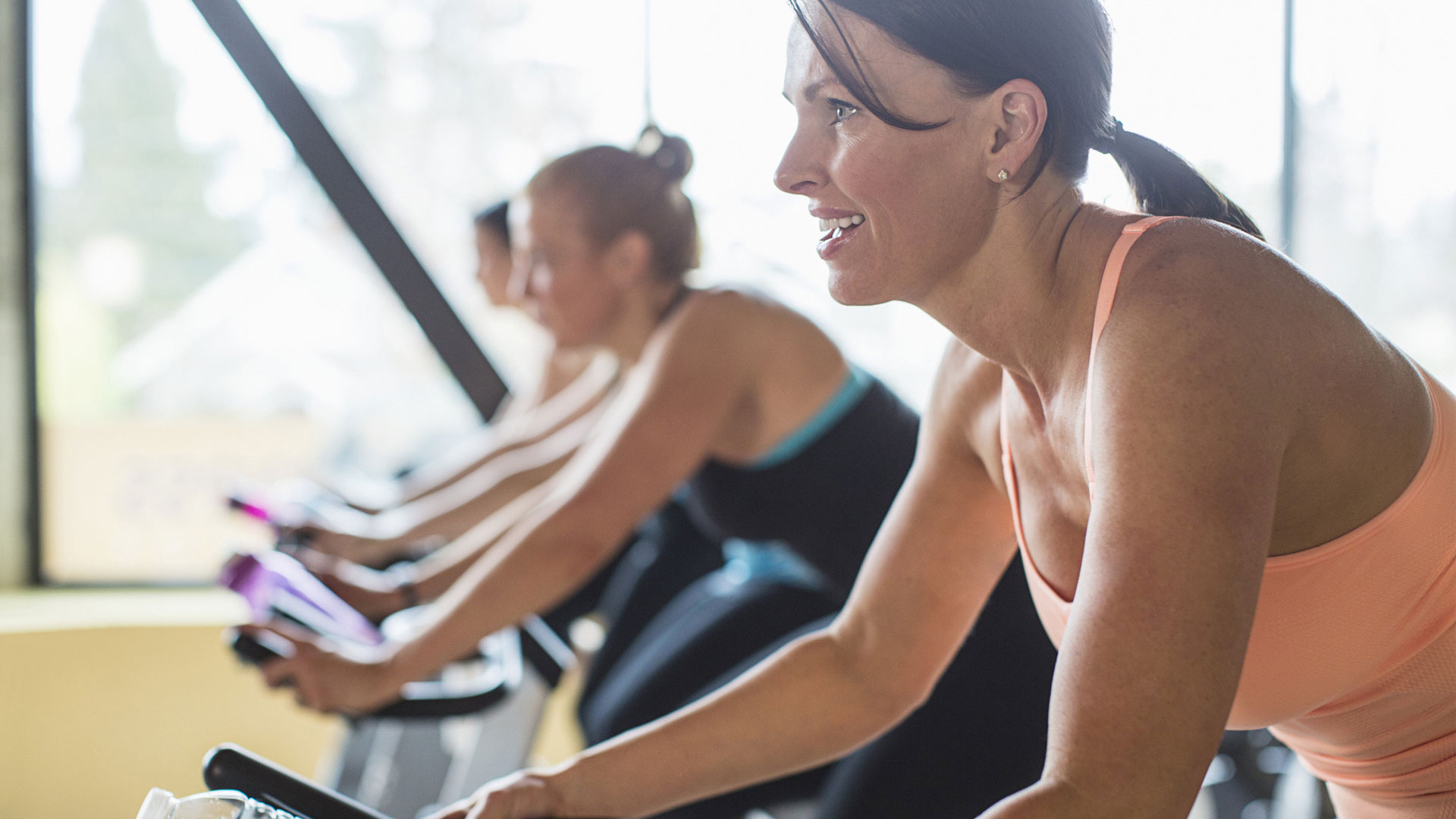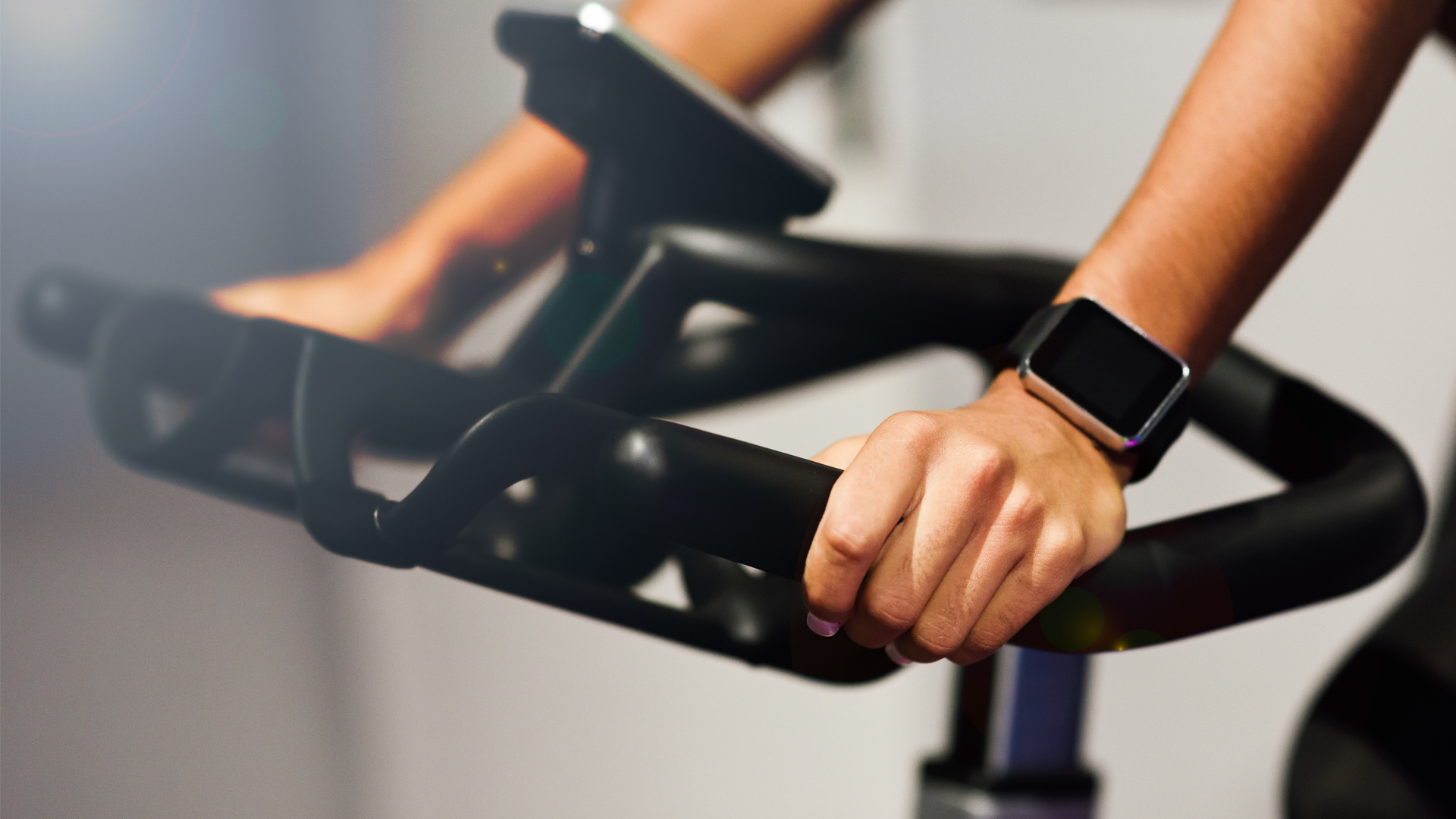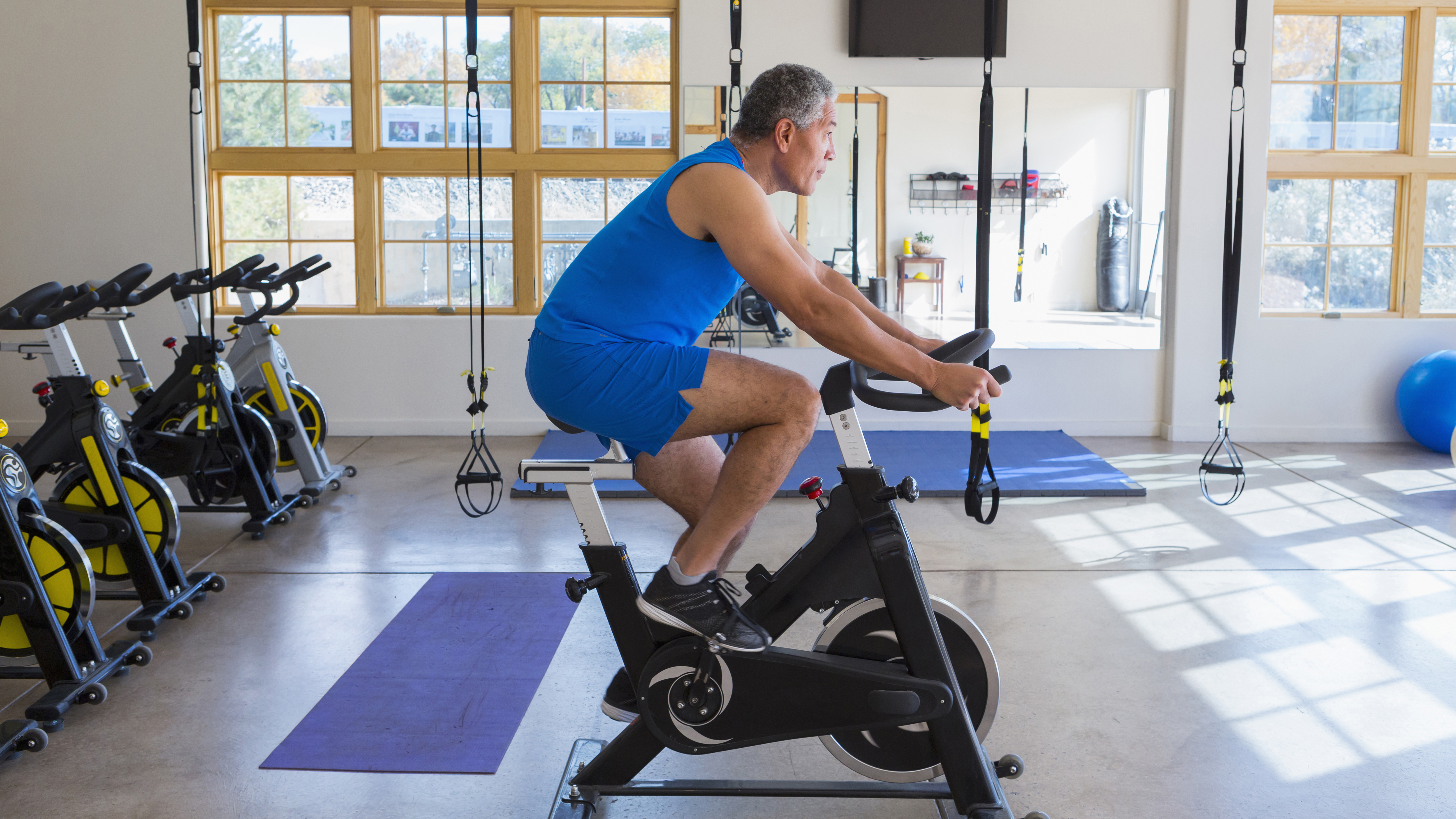Exercise bike benefits: Six reasons to jump in the saddle
There are so many great exercise bike benefits – we run through the main ways using one can improve your life.

There are numerous exercise bike benefits that are worth shouting about. Regularly hopping on your bike could improve both your mental and physical health – and it will give your outdoor cycling skills a boost, too. We've combed through the latest studies and publications to find the biggest benefits of indoor cycling.
Want more fitness tips? Scroll through our round-up of the best exercise bikes to find a machine that suits your space and budget.
1. It boosts your VO2 max and improves health

A 2019 systematic review published in Medicina found that there were numerous health benefits to regular indoor cycling. For starters, the exercise can boost your VO2 Max. For anyone wondering, "What is VO2 max?": it's the maximum amount of oxygen you can use during exercise. It's also a key indicator of aerobic health; the better your VO2 max, the more efficient your body is at turning oxygen into energy.
Regular cycling can also reduce your blood pressure and improve your bone density, according to the review – although more studies are needed to confirm if cycling is significantly better for this than other forms of exercise.
Other studies have shown that cycling of all kinds is effective at helping those with diabetes to reduce their risk of early death (JAMA).
In brief, cycling could help improve various aspects of your physical health, especially if you're engaging in a high enough intensity or for significant lengths of time. So, if you're looking to boost your fitness levels, we prescribe jumping in the saddle and giving these HIIT bike workouts a go.
2. It gives you a mental boost

The link between exercise and mental health has been shown to be a positive one in multiple academic studies, and aerobic exercise (like cycling) has been shown to have positive effects on those who suffer from anxiety and depression.
A small 2004 published in Behavior Research & Therapy showed that aerobic exercise such as indoor cycling reduced anxiety levels in participants. And a broader 2018 systematic review in the Depression and Anxiety journal confirms that it has anti-depressive qualities too.
In addition to this, Psychology and Aging found that 15 minutes of moderate indoor cycling resulted in improvements in cognitive performance – so if you’re struggling to complete a sudoku, it might be time to climb in the saddle.
3. It can be social

Gone are the days when stationary cycling was a solo activity, and the only thing to stare at was the tiny electric screen in front of you showing you how far you had left to go in your workout. These days, you can easily link up to the wider world and even meet up with your friends to cycle together virtually.
The popular virtual cycling app Zwift provides the opportunity to cycle and train within a virtual world from the (dis)comfort of your indoor bike, where you can cycle alongside other riders across the world.
Plenty of fitness companies now offer live workout classes, so you can join in a group spin class on your Peloton Bike or using the iFit app. These are good for athletes with low motivation levels as the instructor will push you to work harder, and you can compare your performance to others in the class.
4. It torches calories

There’s no denying that working out on an exercise bike is one of the most effective ways of burning calories. A small study published in the Medical and Science in Sports and Exercise journal showed that just 30-45 minutes of cycling could boost your basal metabolic rate, which means that you’ll burn calories even after you’ve finished your workout.
Plus, with indoor cycling you can easily vary your workouts. If you want to burn more calories, a higher-impact HIIT session or interval workout will push you harder and keep your heart rate raised for longer than a steady ride.
5: It’s low-impact

Cycling is much kinder on the joints than other higher-impact forms of cardio such as running, as it places less pressure and shock on joints and muscles. This makes it the perfect workout for when you are recovering from injury or have a problem with impact-bearing sports.
6: It burns fat

If you’re looking to lose weight, stationary cycling provides a high-intensity workout that can result in fat loss. A 2010 study in Portuguese medical journal Arquivos Brasileiros de Cardiologia revealed that after 12 weeks of regular indoor cycling (45 minutes, three times a week) alongside a controlled diet, study participants reduced body mass, fat percentage and body mass index (BMI).
In another 2017 study by the Journal of Exercise Rehabilitation, those who took part in a 16-week spinning regime ended up with reduced BMI and a lowered body fat percentage.
Finally, a 2018 study by the Journal of Education and Training Studies found that, following six weeks of regular spinning classes, four participants who were classified as “pre-obese” had moved into a normal weight range. Furthermore, two who were already classed as obese had moved back into pre-obesity. It’s important to note, however, that these results should be viewed alongside positive changes in the participants’ diet.
Sign up for the Live Science daily newsletter now
Get the world’s most fascinating discoveries delivered straight to your inbox.
When not seeking out new running and cycling trails, Howard writes about all things health and fitness as a freelance writer for a range of newspapers, magazines and websites. Howard’s writing has featured in publications including ShortList, The Telegraph, The Times, T3, Mpora, The Week Junior, Red Bull, Red Bulletin, Runner’s World, Trail Running, Women's Running, Fit&Well, Cycling Weekly, Penguin.co.uk. Howard studied Journalism, Film and Broadcasting at Cardiff University, and also has a postgraduate diploma in Magazine Journalism from the same university.











